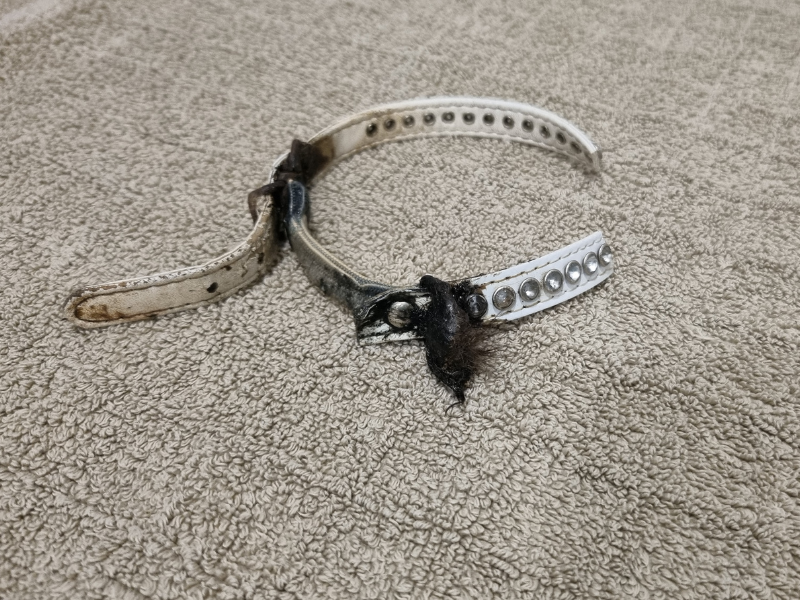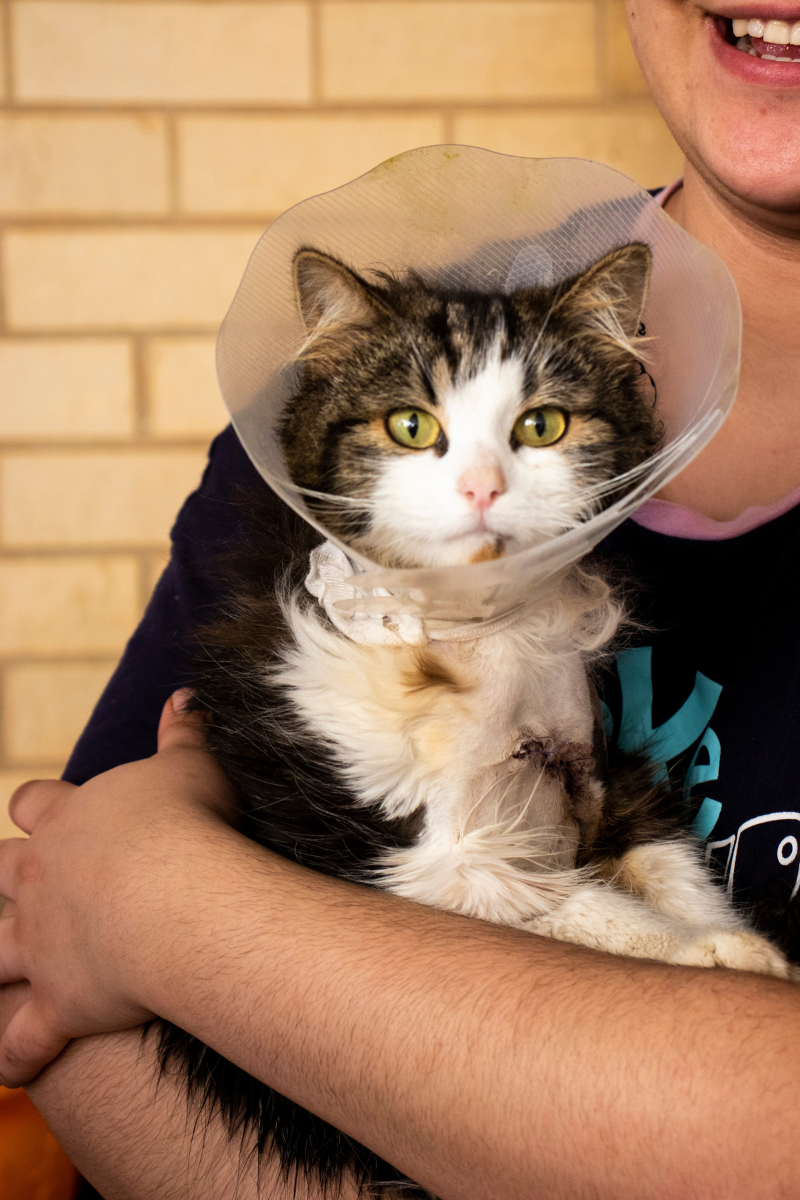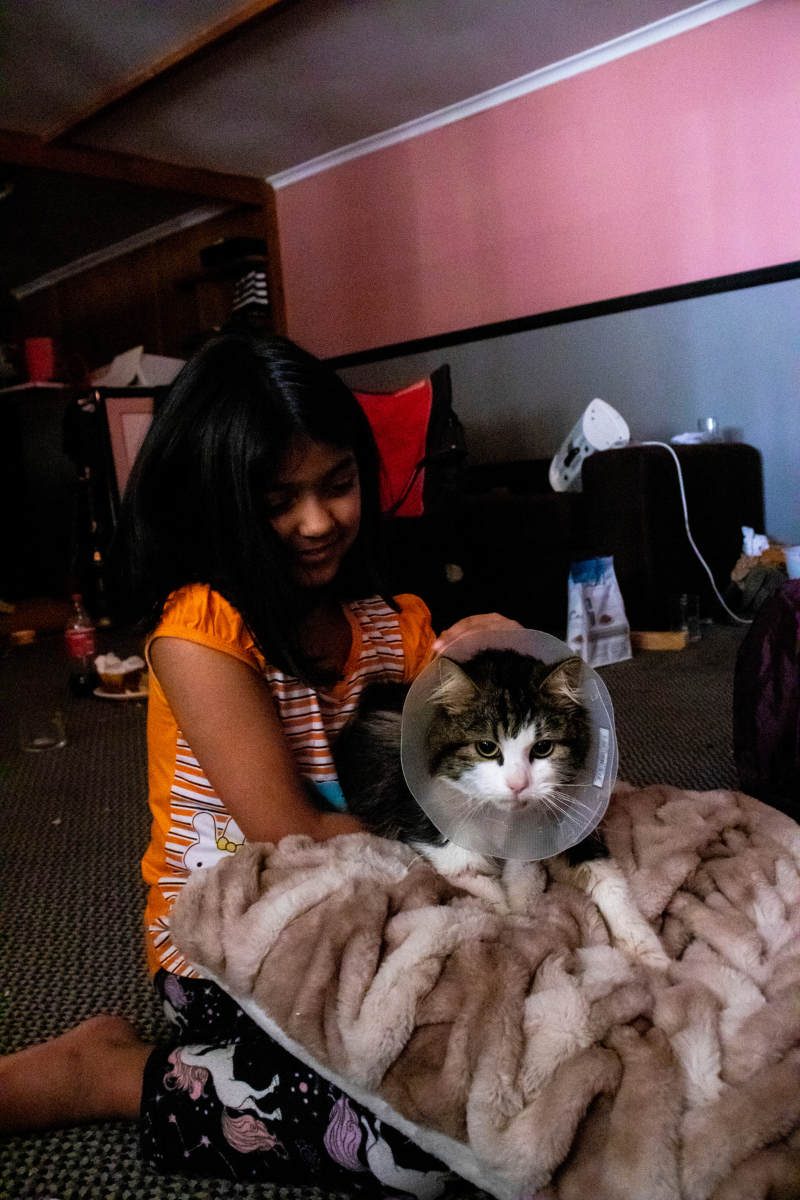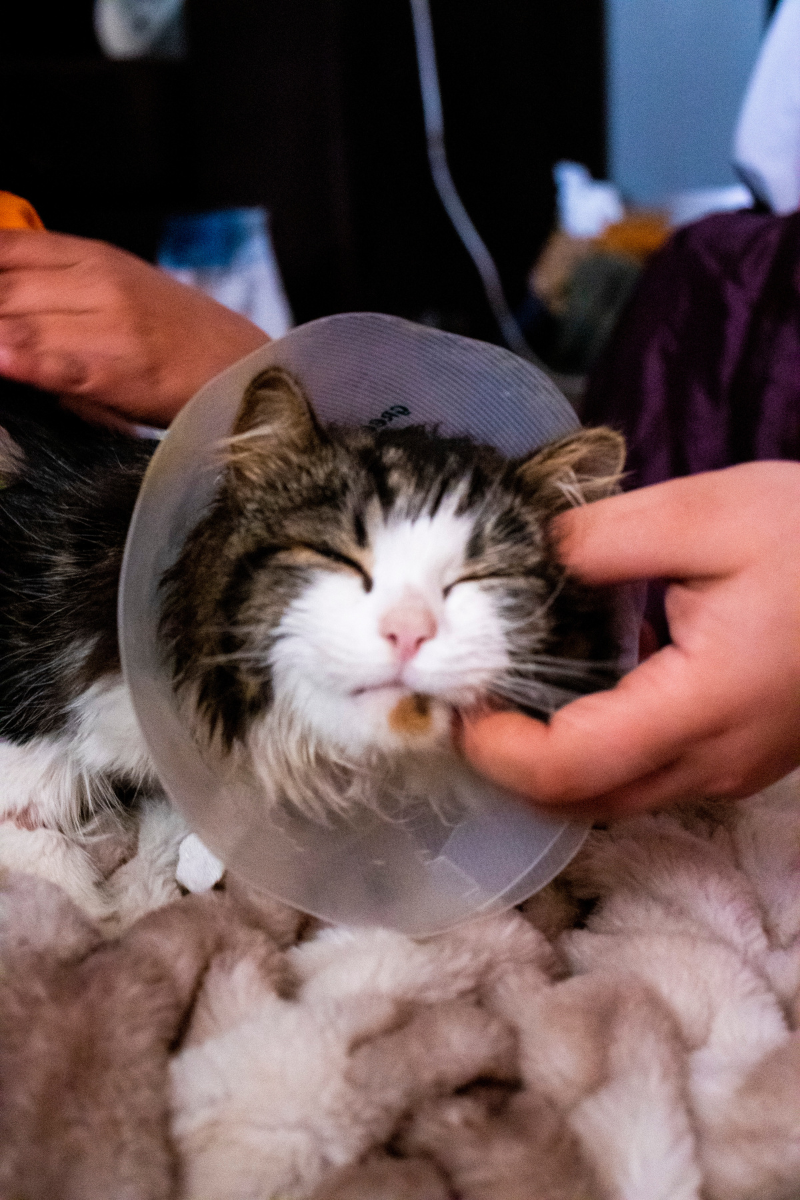When Lily the cat became stuck in her own collar, it seemed as though she might not make it home
August 03, 2022When Lily went missing from her Ingle Farm home in April 2022, her owners hoped their cat would be safe and that they would be reunited as soon as possible, but as time passed they feared the worst had happened.
Three months later, a member of the public saw Lily and posted a photo of her to the Lost Pets of SA Facebook page. A Senior Rescue Officer from RSPCA SA made contact with the person who had seen Lily, and soon found the kitty almost 2km away from home. She was wandering the streets in Para Hills with one front leg through her collar, making it so tight it had cut her skin and embedded into her neck. After taking the cat into care, the emergency vet team was quick to remove the collar and start treating the infected wound, along with bathing and clipping the very scruffy cat.

Her owners told us that Lily often found herself with a foot stuck through her collar at home, but they were always there to help the trapped cat.
When she went missing, there was non-one to help and she was unable to pull her foot back out from the non-stretch collar. As it was firmly buckled, the lack of give meant Lily was left stuck within the collar as she traversed the suburbs.
Due to the risks they pose to cats, RSPCA does not recommend the use of non-stretch collars with fixed buckles like the one that injured Lily. Stretch collars can be similarly dangerous, as they lose elasticity as they age and can also trap and injure cats.
If you want to put a collar on your cat, RSPCA recommends a quick-release collar that comes undone when pulled with force. These collars allow for a cat to be easily identified as a household pet, without risking the cat getting trapped in the collar, or hooked on to objects that they brush past.
Identification can also be attached to quick-release collars, in the form of an engraved tag, embroidery on the collar itself, or even a GPS tracker.
To give wildlife warning of a roaming cat, it is possible to add a colourful collar cover, ultrasonic beeper, or anti-pounce bib. However, for the safety of both cats and wildlife, RSPCA advocates containing cats to their properties or keeping them indoors. In some council districts, you can be fined for allowing your cat to roam off your property.

Although your cat may be identifiable by their collar, it is still important to make sure they are microchipped, with your contact details kept up-to-date.
As is the usual procedure with dogs and cats found roaming, RSPCA SA vets scanned her for a microchip – happily, she had one. Her journey towards being reunited with her owners was paused, however, when RSPCA SA’s rescue team discovered that her details were incorrect, and her owners couldn’t be contacted. With a bit of detective work, an RSPCA SA rescue officer managed to locate Lily’s owner after identifying the vet who had implanted the chip. Fatimah was in tears when she learnt that her cat who had been missing for three months was okay.
Microchips can be used to find owners when an animal does not have a collar – they are impossible to lose and, as long as owner contact details are up-to-date, they ensure a quick return. Microchips are a legal requirement for dogs and cats in South Australia and can be updated online.
To update microchip details, start by searching http://www.petaddress.com.au using your pet’s microchip number – you will be redirected to the database containing the number so that you may contact them directly. Alternatively, contact your microchip implanter or vet to find which database your pet is listed in. In South Australia, it is most likely SA’s Government registry – Dogs and Cats Online (DACO).

Fatimah and her seven-year-old sister Danielle are both incredibly thankful to have Lily back.
When Fatimah went to collect Lily, she expected her friendly and outgoing cat to be quiet and afraid. Much to her owner’s surprise, Lily was happy and comfortable – scarfing down food and enjoying plenty of attention from RSPCA SA’s vet staff.
The family is still awaiting the return of their tabby cat who went missing with Lily, however for now they have attached GPS trackers to their other two kitties and are ensuring they remain attentive and alert to their whereabouts. As for Lily, she is now strictly an indoor cat.
To avoid uncomfortable adventures like Lily’s and keep your cat safe from cat fights, diseases and cars, RSPCA recommends containing your cat indoors. To give your cat some time to explore outdoors, consider installing an outdoor enclosure such as an aviary or enclosing a side or back yard with cat-proof fencing. Always make sure there’s plenty of warm, dry shelter and things for your cat to do – and bring him or her back inside once they’ve had some fresh air and sunshine.

For more tips on how to keep your cat happy and safe, go to – https://safeandhappycats.com.au/



